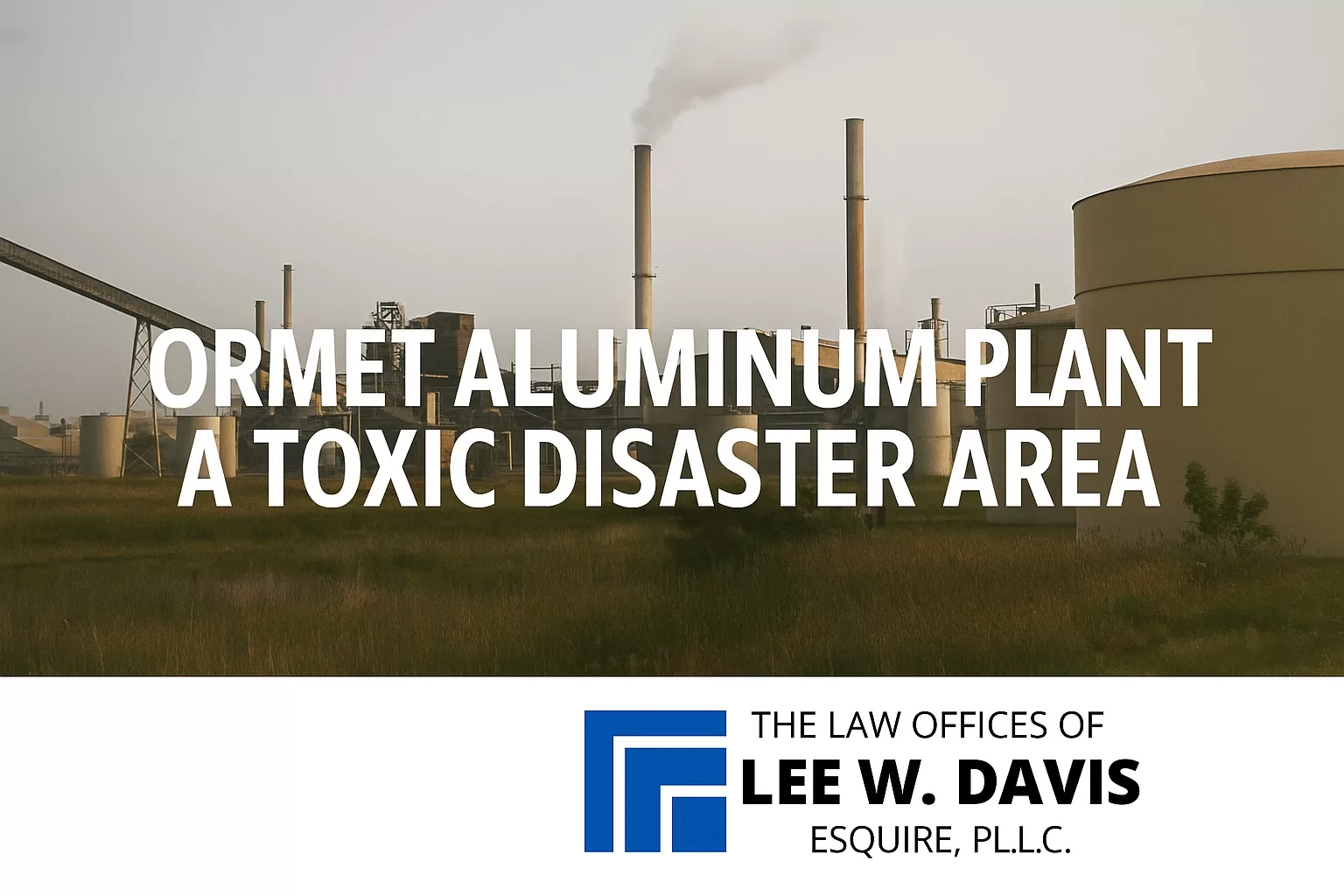Ormet Aluminum Plant asbestos exposure is a serious concern for workers who spent time around hot industrial systems, maintenance areas, insulation, and equipment repair at or connected to the Hannibal, Ohio facility across from New Martinsville, West Virginia. If you or a family member has been diagnosed with mesothelioma (or another asbestos-related disease) and your work history includes Ormet or related contractors, deadlines can apply quickly—so it’s worth getting a focused case review while records and work history are still available.
Free Case Review (Confidential): Call (412) 781-0525 or (855) 397-6640, or use the contact form to request a no-obligation review of your Ormet work history and diagnosis timeline.
Though aluminum maker Ormet Corporation closed the doors of its Hannibal, Ohio plant in 2013, the company left a lasting mark on the small town. Once the fourth-largest aluminum producer in the U.S., taking its proud place behind giants like Alcoa, Ormet owned “dozens of football field-sized buildings”, according to the Wall Street Journal, but closed after disputes between power providers and state regulators. At closing about 1,000 employees worked there. In years past, the number was much higher.
Ohio’s Former Ormet Aluminum Plant a Toxic Hazard
As a matter of fact, Ormet’s property was declared an EPA Superfund site in 1987. According to the EPA, “moderate levels of cyanide and fluoride, both mobile and in the groundwater, were identified, and soils in the area were identified as a primary ongoing contributor of cyanide and fluoride contamination to groundwater.” About 47 acres of the site were of major concern.
In addition, the employees at Ormet Aluminum were regularly exposed to asbestos. When the plant began operations in 1958, asbestos materials were popular because they were the cheapest and most efficient way to avoid fires inside plants where high temperatures were commonplace.
Asbestos was known for centuries as a top-notch fire resistant material, so it was often used as insulation for pipes, wiring, generators, boilers, and other equipment. Workers handled the material with their bare hands and rarely wore masks to avoid inhaling asbestos fibers.
Mesothelioma/Asbestos Legal Help – WV, MI & PA
Speak directly with attorney Lee W. Davis. No call centers. Free, confidential review.
Usually, employees such as those at Ormet Aluminum knew little or nothing about the dangers of the material, and plant executives were unlikely to spread the word, even when it was becoming evident that asbestos inhalation was causing major respiratory problems among workers.
In aluminum plants, furnaces included asbestos material. Pots were lined with asbestos-containing refractories. Asbestos pipe covering was found throughout the reduction plant as well as in the South Plant at Ormet and in the rolling mill as well.
“Dough balls” used to stop molten aluminum from escaping the furnaces were made of raw asbestos fibers. Workers were even provided with protective clothing made of asbestos! Clearly, for many Ormet Aluminum employees, exposure was unavoidable.
Today, former workers are suffering the ravages of mesothelioma, a form of cancer that often takes decades to appear and is relentless once symptoms begin. Mesothelioma is historically one of the most difficult cancers to treat and one that responds least to conventional treatments like chemotherapy or radiation.
Sadly, it was clear that many Ormet employees (and exposed family members) would wind up treading the mesothelioma path, yet executives seemed not to care.
Don’t let Ormet and the companies that manufactured the asbestos products they used get away with murder…literally. If you have been sickened with mesothelioma due to asbestos exposure at Hannibal’s Ormet Aluminum plant, contact an experienced asbestos attorney for a list of your options. A successful lawsuit could help you and your family move forward during this difficult ordeal.
If your work history includes Ormet Aluminum asbestos exposure, don’t assume it’s “too old” to matter or that you have to prove every product name before you can act. What matters is your diagnosis timeline and a credible work history that can be documented and corroborated. The sooner you start, the easier it is to preserve records, locate witnesses, and build the strongest claim possible.
Free, confidential case review: Call (412) 781-0525 today, or use the contact form to request a no-obligation review. If you have a diagnosis, bring it—and we’ll handle the rest.
Check If Your Family Was Exposed
Get your free guide instantly + a confidential case review.
🔒 100% Confidential. No obligations.
FAQs
Who may have higher asbestos exposure risk at Ormet Aluminum?
Trades often involved in higher-risk work include maintenance crews, millwrights, pipefitters, boilermakers, electricians, insulators, welders, laborers, and contractors who worked outages, tear-outs, repairs, or equipment rebuilds.
What kind of proof helps in an Ormet Aluminum mesothelioma claim?
Helpful evidence can include union/work records, Social Security “Itemized Statement of Earnings,” employment files, coworker statements, job descriptions, and any documents showing the areas you worked (maintenance shops, boiler/steam systems, pump rooms, pipe runs, etc.). You don’t need every product name to start.
What if the exposure happened decades ago?
That’s common. Mesothelioma and other asbestos diseases often develop years after exposure. Many claims are still timely because legal deadlines often run from diagnosis or death—so acting sooner can protect your rights.
Mesothelioma/Asbestos Legal Help – WV, MI & PA
Speak directly with attorney Lee W. Davis. No call centers. Free, confidential review.

